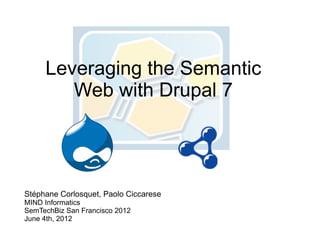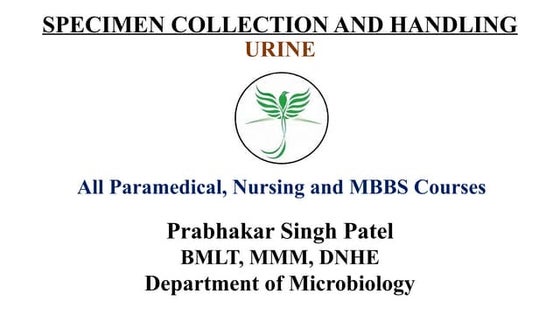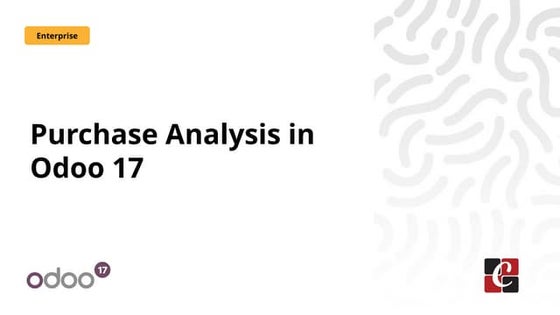Drupal and the semantic web - SemTechBiz 2012
- 1. Leveraging the Semantic Web with Drupal 7 St├®phane Corlosquet, Paolo Ciccarese MIND Informatics SemTechBiz San Francisco 2012 June 4th, 2012
- 2. About the speakers ŌŚÅ St├®phane Corlosquet ŌŚÅ 6 years with Drupal ŌŚÅ Drupal core maintainer (RDF) ŌŚÅ Drupal Security Team member ŌŚÅ Co-authored the Definitive Guide to Drupal 7 ŌŚÅ Co-maintain RDF Extensions, SPARQL, schema.org ŌŚÅ Member of the RDFa WG
- 3. About the speakers ŌŚÅ Paolo Ciccarese, PhD ŌŚÅ Assistant in Neurology at Mass General Hospital ŌŚÅ Research faculty at Harvard Medical School ŌŚÅ Author of 30+ scientific publications ŌŚÅ Senior software and knowledge engineer ŌŚÅ Member of W3C HCLS Interest Group ŌŚÅ Co-chair of the W3C Open Annotation Community Group
- 4. Tutorial outline ŌŚÅ Introduction to Drupal ŌŚÅ What is it good for ŌŚÅ Installation / Hosted Drupal ŌŚÅ Semantic Web and Drupal ŌŚÅ Technology stack ŌŚÅ Use cases, hands on session ŌŚÅ Domeo & Drupal
- 5. Drupal ŌŚÅ Dries Buytaert - small news site in 2000 ŌŚÅ Open Source - 2001 ŌŚÅ Content Management System ŌŚÅ LAMP stack ŌŚÅ Non-developers can build sites and publish content ŌŚÅ Control panels instead of code http://www.flickr.com/photos/funkyah/2400889778 /
- 6. Drupal ŌŚÅ Open & modular architecture ŌŚÅ Extensible by modules ŌŚÅ Standards-based ŌŚÅ Low resource hosting ŌŚÅ Scalable
- 7. Building a Drupal site http://www.flickr.com/photos/toomuchdew/3792159077/
- 8. Building a Drupal site ŌŚÅ Create the content types you need Blog, article, wiki, forum, polls, image, video, podcast, e- commerce... (be creative) http://www.flickr.com/photos/georgivar/4795856532/
- 9. Building a Drupal site ŌŚÅ Enable the features you want Comments, tags, voting/rating, location, translations, revisions, search... http://www.flickr.com/photos/skip/42288941/
- 10. Building a Drupal site Set how your content is displayed
- 11. Building a Drupal site Thousands of free contributed modules ŌŚÅ Google Analytics ŌŚÅ Wysiwyg ŌŚÅ Captcha ŌŚÅ Calendar ŌŚÅ XML sitemap ŌŚÅ Five stars ŌŚÅ Twitter ŌŚÅ ... http://www.flickr.com/photos/kaptainkobold/1422600992/
- 12. The Drupal Community http://www.flickr.com/photos/x-foto/4923221504/
- 13. The Drupal Community ŌĆ£ItŌĆÖs really the Drupal community and not so much the software that makes the Drupal project what it is. So fostering the Drupal community is actually more important than just managing the code base.ŌĆØ - Dries Buytaert http://webchick.net/node/80
- 14. Who uses Drupal?
- 15. Who uses Drupal?
- 16. Who uses Drupal?
- 17. Who uses Drupal?
- 18. Who uses Drupal?
- 19. Who uses Drupal?
- 20. Who uses Drupal?
- 21. Who uses Drupal?
- 22. Who uses Drupal?
- 23. Who uses Drupal? http://buytaert.net/tag/drupal-sites
- 24. Try Drupal 7 ŌŚÅ Download and Install Drupal 7 ŌŚÅ Grab latest release http://drupal.org/project/drupal ŌŚÅ LAMP stack: ŌĆō Mac OS: http://www.mamp.info/ ŌĆō Acquia Stack http://acquia.com/downloads ŌŚÅ Drupal Gardens: free Drupal 7 site http://www.drupalgardens.com/
- 25. Rich Snippets
- 26. Google
- 27. Yahoo!
- 28. Bing
- 29. Why Structured Data in HTML ŌŚÅ Help machines extract relevant data from HTML ŌŚÅ Can make use of this data in amazing ways (e.g. enhanced search results)
- 30. Structured Data in HTML ŌŚÅ Add or alter HTML attributes ŌŚÅ Syntaxes ŌĆō Microformats (@class, @rel) ŌĆō RDFa (@property, @about, @typeof, ŌĆ”) ŌĆō Microdata (@itemscope, @itemtype, @itemprop, ŌĆ”) ŌĆō RDFa 1.1 & RDFa Lite
- 31. Structured Data in HTML ŌŚÅ Evolution and cross-syntax influence
- 32. Schema.org
- 33. Schema.org ŌŚÅ Describe the type of your content (Person, Event, Recipe, Product, Book, Movie, etc.) ŌĆō 290 types and counting ŌŚÅ Each type has a set of properties ŌĆō Common properties: name, description, image, url ŌĆō Specific properties depending on the type (see type page on schema.org) ŌĆō 240 properties and counting
- 34. Credits: Dan Brickley - link.
- 35. Schema.org
- 36. Schema.org module for Drupal ŌŚÅ UI instead of code ŌŚÅ Map your content types and fields to the schema.org terms http://drupal.org/project/schemaorg
- 37. Example: Event
- 38. Rich Snippet testing tool ŌŚÅ http://www.google.com/webmasters/tools/richsnippets
- 39. Examples in the wild ŌŚÅ Events ŌĆō ŌĆ£force11 eventsŌĆØ: http://goo.gl/VVhNM ŌĆō DrupalCon Munich: http://goo.gl/jgMvw ŌŚÅ Recipes ŌĆō ŌĆ£delicious lemon coconut squaresŌĆØ: http://goo.gl/ORdl1 ŌĆō Apple pie with ingredients: http://goo.gl/wCO1w
- 40. Examples in the wild ŌŚÅ University of Waterloo ŌĆō School of Public Health and Health Systems launch: http://goo.gl/Df9hp ŌŚÅ Curling tournament calendar ŌĆō European Curling Championships 2012: http://goo.gl/YXgXl ŌĆō World WomenŌĆÖs Curling Championships 2013: http://goo.gl/BDNZW
- 41. Schema.org module ŌŚÅ http://drupal.org/project/schemaorg ŌĆō Download module (beta) ŌĆō Documentation on drupal.org ŌĆō Screencast + examples
- 42. Schema.org module Play time! http://www.google.com/webmasters/tools/richsnippets
- 43. Drupal 7 and RDF
- 44. History of RDF in Drupal ŌŚÅ rdf.php (2000, Dries) ŌŚÅ FOAF, vCard (2004, walkah) ŌŚÅ Relationship (2005, dman) ŌŚÅ Semantic Search (2006, hendler) ŌŚÅ RDF (2007, Arto) ŌŚÅ OpenCalais (febbraro, 2008) ŌŚÅ RDF CCK (2008, scor)
- 45. Drupal 7 and RDF ŌŚÅ Drupal 7 core is RDFa enabled ŌŚÅ RDFa output by default on blogs, forums, comments, etc. ŌĆ©using FOAF, SIOC, DC, SKOS
- 46. Architecture ŌŚÅ User driven data model ŌŚÅ Content type => RDF class ŌŚÅ Field => RDF property ŌŚÅ Node => RDF resource http://en.wikipedia.org/wiki/File:Oriente_Station_Lisboa_roof.jpg
- 47. Content types and Fields
- 48. Content types and Fields
- 49. Node
- 50. Drupal 7 and RDF
- 51. Drupal 7 and RDF ŌŚÅ Contributed module for more features ŌŚÅ RDF Extensions ŌŚÅ Serialization formats: RDF/XML, Turtle, N-Triples ŌŚÅ SPARQL ŌŚÅ Expose Drupal RDF data in a SPARQL Endpoint ŌŚÅ SPARQL Views ŌŚÅ Display remote RDF data in Drupal using SPARQL ŌŚÅ JSON-LD ŌŚÅ Expose Drupal RDF data as JSON-LD (CORS-enabled) ŌŚÅ Features and packaging ŌŚÅ Build distributions / deployment workflow
- 52. SPARQL Endpoint ŌŚÅ Indexing http://drupal.org/project/sparql
- 53. SPARQL Endpoint ŌŚÅ Public endpoint available at /sparql ŌŚÅ http://prefix.cc/sioc,rnews.sparql
- 54. JSON-LD in Drupal ŌŚÅ Client side as well as server side friendly ŌŚÅ Browser Scripting: ŌĆō Native javascript format ŌĆō RDFa API in the DOM ŌŚÅ Data can be fetched from anywhere: ŌĆō Cross-Origin Resource Sharing (CORS) enabled ŌŚÅ Client can mash data ŌŚÅ http://drupal.org/project/jsonld
- 55. JSON-LD plug
- 56. RDFa 1.1 ŌŚÅ RDFa Lite ŌŚÅ RDFa 1.1 Full ŌŚÅ http://rdfa.info/play/
- 57. Demos rNews / SPARQL PREFIX dc: <http://purl.org/dc/terms/> PREFIX rnews: <http://iptc.org/std/rNews/2011-10-07#> SELECT * WHERE { ?s a rnews:Article; dc:title ?title. }
- 58. Demos ŌŚÅ Occupy Directory ŌĆō http://directory.occupy.net/occupations ŌĆō JSON-LD: http://directory.occupy.net/node/19652.jsonld ŌŚÅ Federated General Assembly ŌĆō Drupal distribution for occupy movement ŌĆō http://wiki.occupy.net/wiki/Federated_General_Assembly
- 59. D OM E O : a web-based tool for semantic annotation of online documents
- 60. As (biomedical) scientistsŌĆ” ŌĆó We deal with an increasing amount of digital resources (documents, images, videos, datasets, databasesŌĆ” ) ŌĆó We commonly use annotation butŌĆ” ŌĆō are we really efficient? ŌĆō can we leverage machine computation? ŌĆō can we share it easily with our colleagues? ŌĆō can we capitalize on the work of colleagues?
- 61. Annotation Framework (C omponents) ŌĆó A nno ta tion O ntolog y (A O ): O WL ╠² vocabulary for representing and sharing annotation of digital resources and their fragments ŌĆō Website http:/purl.org/ home / ao/ ŌĆō P aper http:/www.jbiomedsem.com/ / content/ S 2/ 4 2/ S ŌĆó D O M E O c lient: web application for producing and sharing manual, semi- automatic and automatic annotation ŌĆō Website http:/annotationframework.org / ŌĆō P aper http:/www.jbiomedsem.com/ / content/ S 1/ 1 3/ S
- 62. Annotation of digital resources Visually and effectively annotate - better semantically annotate - any digital resource and resource fragment, while performing our regular browsing/ reading activities http:/ antibodyregis try.org/ / antibody17/antibodyform.html? gui_type=advanced&ab_id=2266850 antibodyregistry.org
- 63. Leverage text mining and community curation R un text mining and entities recognition algorithms on scientific documents and persist the results in a standard format B enefit from crowdsourcing by supporting curation of manual and automatic annotation
- 64. ŌĆ” and more ŌĆó E fficiently search and reuse the annotation ŌĆō S emantic inference ŌĆó S ubscribe to feeds related to topics of interest ŌĆō P roteins, C ells, Authors, P apersŌĆ” ŌĆó R etrieve additional content (mashups) ŌĆō E ntrez gene, UniP rot, ŌĆ”
- 65. S emantic tagging through ontologies S emantic Tag http:/ purl.obolibrary.org/ / obo/ R _000004168 P Label ŌĆśamyloid beta A4 proteinŌĆÖ E xact synonyms ŌĆśAP P ŌĆÖ, ŌĆśamyloidogenic glycoproteinŌĆÖ, ŌĆ” R elated S ynonyms ŌĆśA4ŌĆÖ, ŌĆśAB P P ŌĆÖ, Is a http:/ purl.obolibrary.org/ / obo/ R _000000001 P Label ŌĆśproteinŌĆÖ D efinition ŌĆśAn amino acid chain thatŌĆ” ŌĆÖ S ource: P rotein Ontology (P R O ) https:/ pir5.georgetown.edu/ / wiki/ R O P
- 66. AP P s for the S emantic R esources P roject, M ay 2010
- 67. Zooming in AP P s for the S emantic R esources P roject, M ay 2010
- 68. Annotation O ntology (AO ) O WL╠² vocabulary for representing and sharing annotation of digital resources and their fragments Not only for biomedicine! ŌĆōWebsite http:/purl.org/ home / ao/ ŌĆōP aper http:/www.jbiomedsem.com/ / content/ S 2/ 4 2/ S
- 69. A simplified view of AO ’āśAO allows to annotate: R es o urc es : D ocuments (HTM L, P D F, Word, E xcel), Images, D atabases, Web S ervices... (and their fragments) ’āś S pecifying (or not) an: A nno ta tio n Type : through one of the already available types (errata, highlight, qualifiers...) or the ones the users will define. ’āśWith (or without) a: Topic : free text, structured text, UR Is, R D F entities, R D F graphs, domain ontologiesŌĆ” ’āśTracing: P rovena nc e : who created what, when, with which software, with what expectationsŌĆ”
- 70. AlzS WAN: http:/tinyurl.com/ / 18r Annotating a document
- 71. Annotating a document fragment P rotein O ntology ŌĆō P R O : http:/ purl.org/ / obo/owl/ R O P
- 72. E xperiments Workflows HyQ ue triples S WAN O ntology 2.0: http:/ code.google.com/ swan-ontology/ / p/
- 73. Annotation O ntology Network B iotea The Living D ocument P roject
- 74. Open Annotation Community Group Annotation O ntology is going to be replaced in our applications by the O pen Annotation M odel developed through the W3C Open Annotation C ommunity Group ŌĆōWebsite http:/www.w3.org/ / community/openannotation/ ŌĆōC ore M odel http:/www.openannotation.org/ / spec/core/ ŌĆōE xtensions http:/www.openannotation.org/ / spec/extension/
- 75. D O M E O: D ocument M etadata Organizer
- 76. S emantic Tags or Q ualifiers [1]
- 77. S emantic Tags or Q ualifiers [2]
- 78. S emantic Tags or Q ualifiers [3]
- 79. D omeo and the NC B O Annotator annotator-service D omeo allows automatic/ manual annotation with terms coming from selected ontologies managed by the B ioP ortal http:/ www.bioontology.org/ /
- 80. R unning NC BO Annotator Additional text mining services will be listed here
- 81. NC BO Annotator R esults in D omeo List of recognized entities
- 82. R esults C uration C ustomizable
- 83. C umulative R esults C uration One item only All instances with the same text match All instances independently from the text match
- 84. S erialization in AO / D F (S hare) R
- 85. UIM A, C lerezza and AO E valuating P erformance C omparing Algorithms Learning ŌĆ” Text Curated M ining R esults AO R D F Text M ining R esults Applications AO R D F P ublishing http:/ www.slideshare.net/ / paolociccarese/domeo-and-text-mining
- 86. Combining'Disparate'Sources'of'Data' h[p://annota7onframework.org/!
- 87. Demos ŌŚÅ Domeo + Drupal ŌĆō Data mash up from independent, but related sources
- 88. Thanks! ŌŚÅ St├®phane Corlosquet: scorlosquet@gmail.com ŌĆō @scorlosquet ŌĆō http://openspring.net/ ŌŚÅ Paolo Ciccarese: paolo.ciccarese@gmail.com











































































![S emantic Tags or Q ualifiers [1]](https://image.slidesharecdn.com/slidesschema-org2012-06-semtechcombined-120607014125-phpapp01/85/Drupal-and-the-semantic-web-SemTechBiz-2012-76-320.jpg)
![S emantic Tags or Q ualifiers [2]](https://image.slidesharecdn.com/slidesschema-org2012-06-semtechcombined-120607014125-phpapp01/85/Drupal-and-the-semantic-web-SemTechBiz-2012-77-320.jpg)
![S emantic Tags or Q ualifiers [3]](https://image.slidesharecdn.com/slidesschema-org2012-06-semtechcombined-120607014125-phpapp01/85/Drupal-and-the-semantic-web-SemTechBiz-2012-78-320.jpg)





































![[HKDUG] #20151017 - BarCamp 2015 - Drupal 8 is Coming! Are You Ready?](https://cdn.slidesharecdn.com/ss_thumbnails/hkdug20151017-barcamp2015-drupal8iscomingareyouready-151017054334-lva1-app6891-thumbnail.jpg?width=560&fit=bounds)
































